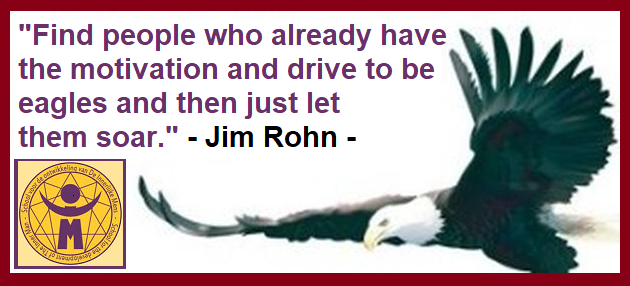Dear Eclecticus,
The Work offers the idea that the human being can be viewed as having three controlling functions or brains, namely: the intellect which resides in the head, the moving-instinctive brain which resides in the spine and the emotional brain which is centered in the solar plexus, but disperse to some degree throughout the abdomen. Gurdjieff presented this in an analogy of a horse, carriage and driver. He started with following words...
"A man as a whole with all his separately concentrated and functioning localizations, that is to say: his formed and independently educated 'personalities', is almost exactly comparable to that organization for conveying a passenger, which consists of a carriage, a horse, and a coachman. It must first of all be remarked that the difference between a real man and a pseudo-man, that is: between one who has his own 'I' and one who has not, is indicated in the analogy we have taken by the passenger sitting in the carriage.
In the first case, that of the real man, the passenger is the owner of the carriage; and in the second case, he is simply the first chance passer-by who, like the fare in a 'hackney carriage', is continuously being changed. The body of a man with all its motor reflex manifestations corresponds simply to the carriage itself; all the functionings and manifestations of feeling of a man correspond to the horse harnessed to the carriage and drawing it; the coachman sitting on the box and directing the horse corresponds to that in a man which people call consciousness or mentation; and finally, the passenger seated in the carriage and commanding the coachman is that which is called 'I'.
The Myth of the Divine Charioteer: Krishna and Arjuna
Know the Self as lord of the chariot,
The body as the chariot itself,
The discriminating intellect as the charioteer,
And the mind as reins.
The senses, say the wise, are the horses;
Selfish desires are the roads they travel.

I. Introduction
The relationship between Krishna and Arjuna is one of the most significant and profound narratives within Hindu mythology. Their dynamic exemplifies the complexities of duty, morality, and the divine guidance that permeates the epic tales of the Mahabharata. Central to this relationship is the Bhagavad Gita, a philosophical discourse that unfolds on the battlefield of Kurukshetra. This article aims to explore the mythological and philosophical implications of Krishna’s role as charioteer and guide to Arjuna, highlighting the lessons that resonate through time.
II. The Historical Context of the Mahabharata
The Mahabharata, one of the longest epics in the world, is a narrative that delves into the lives, struggles, and moral dilemmas of the Kuru dynasty. It is not merely a tale of war but a profound exploration of human nature, ethics, and the consequences of one’s actions.
Background of the Mahabharata epic: Composed by the sage Vyasa, the Mahabharata encapsulates the essence of dharma (duty/righteousness) and explores the conflicts arising from human desires and responsibilities.
The Kurukshetra War: This epic battle serves as the setting for the story, symbolizing the duality of good versus evil and the internal struggles that individuals face when confronted with difficult choices.
Key characters leading up to the conflict: The protagonists, the Pandavas and the Kauravas, are embroiled in a struggle for power, leading to the fateful war that requires divine intervention.
III. The Role of Krishna as a Charioteer
Krishna, an incarnation of Lord Vishnu, is revered for his divine qualities, wisdom, and playful nature. His choice to be Arjuna’s charioteer is laden with symbolic meaning.
Description of Krishna’s divine attributes: Krishna embodies compassion, wisdom, and an understanding of the cosmic order. His multifaceted persona reflects the complexities of existence.
The symbolic significance of being a charioteer: A charioteer guides and directs the chariot, symbolizing the importance of guidance in the journey of life. This role is essential for navigating the challenges of existence.
Krishna’s choice to serve as Arjuna’s charioteer: By choosing to be a charioteer rather than a warrior, Krishna emphasizes the importance of guidance over force, showcasing his role as a divine mentor.
IV. Arjuna’s Dilemma: The Moral and Ethical Conflict
As the battle commences, Arjuna faces a profound moral crisis. His reluctance to engage in battle against his own kin highlights the complexities of duty and righteousness.
Arjuna’s initial reluctance to fight: Arjuna is torn between his duty as a warrior (Kshatriya) and his love for his family. His internal conflict sets the stage for the teachings that follow.
The emotional turmoil faced by Arjuna on the battlefield: Overwhelmed with grief and compassion, Arjuna’s hesitation signifies the universal struggle between personal emotions and societal obligations.
The implications of duty (dharma) and righteousness: Arjuna’s conflict represents the broader theme of dharma, questioning what is right in the face of familial loyalty and societal expectations.
V. The Teachings of the Bhagavad Gita
In response to Arjuna’s despair, Krishna imparts timeless wisdom that forms the core of the Bhagavad Gita.
Overview of Krishna’s teachings during the dialogue: Krishna addresses Arjuna’s doubts, encouraging him to rise above his emotions and fulfill his duty.
Key philosophical concepts: The Gita introduces profound ideas such as Dharma (righteousness), Karma (action), and Bhakti (devotion), each contributing to a holistic understanding of life.
The transformation of Arjuna’s perspective: Through Krishna’s guidance, Arjuna evolves from a state of confusion to clarity, embracing his responsibilities with a renewed sense of purpose.
VI. Symbolism in the Chariot Scene
The chariot scene in the Bhagavad Gita is rich in symbolism, representing deeper truths about the human experience.
The chariot as a metaphor: The chariot symbolizes the human body, with its journey through life representing the soul’s quest for understanding and fulfillment.
The significance of the horses: The horses pulling the chariot represent the senses, illustrating how one must control their desires and impulses to steer towards righteousness.
The role of the reins: The reins symbolize self-control and discipline, essential for navigating the complexities of life and achieving spiritual growth.
VII. The Legacy of Krishna and Arjuna
The narrative of Krishna and Arjuna transcends time, leaving an indelible mark on Hindu philosophy and spirituality.
The impact of their relationship: Their bond highlights the importance of guidance and mentorship, influencing countless seekers of truth and wisdom.
Inspiration in art and literature: The story continues to inspire a plethora of artistic expressions, from classical dance to modern literature, reflecting its universal themes.
Relevance in contemporary discussions: The moral dilemmas faced by Arjuna are akin to the ethical challenges encountered today, making their story profoundly relevant in modern discourse.
VIII. Conclusion
In conclusion, the myth of Krishna as the divine charioteer and Arjuna’s transformative journey encapsulates essential teachings that resonate through the ages. Their story is not merely a narrative of conflict but a profound exploration of duty, morality, and the path to self-realization. The Bhagavad Gita remains a timeless guide for individuals seeking clarity in their own lives. As we delve deeper into these teachings, we find wisdom that can illuminate our paths in an ever-complex world.
Source: https://hindu.mythologyworldwide.com/

"Vind mensen, die in zichzelf zowel de motivatie als de aangeboren drijfveer hebben om aan hun Innerlijke Zelf te werken, en we zullen hen gidsen."
- DIMschool vzw, de énige gespecialiseerd in Zelfkennis, zijnde: het kennen van het Zelf -
--------------------------------------------------------------------------------------------------------------------------------------------------
En, voel jij je geroepen om Spiritualia te sponsoren?
Klik dan op deze link. Alvast bedankt!
Overschrijven kan ook via: IBAN: BE22 7795 9845 2547 - BIC: GKCCBEBB
- Indien je zo'n (bak)steentje bijdraagt, ook eventueel via een aankoop of een Zoek&Vind abonnement, mogen we jouw naam hieronder publiceren? Laat het ons weten! -

- Ook kan je dus in onze webshop iets aankopen, waaronder:
Archetypen vragenlijst
Kristallen schedels
Pendels
Purperen plaatjes
Wierook & Benodigdheden
Voor de 'Zoekers naar hun Innerlijke Waarheid' is er...: Eclecticus!
En, dan heb je nog ...
DIMschool biedt 10 interessante privé-sessies aan waaruit jij kan kiezen!
Dossier Zelfkennis: Over de Handleiding Pendelen van A tot Z
'Eclecticus': een korte introductie…
Wat is jouw Archetype ? En, ken je ook die van jouw partner?
Een Cursus in Wonderen - A Course in Miracles: een introductie.
Interesse in Kabbala en de Boom des Levens?
Pssst! Jij, ja jij! Leren werken met Runen?… De handleiding is beschikbaar!
En, dan hebben we nog een 400-tal sterk afgeprijsde boeken!
